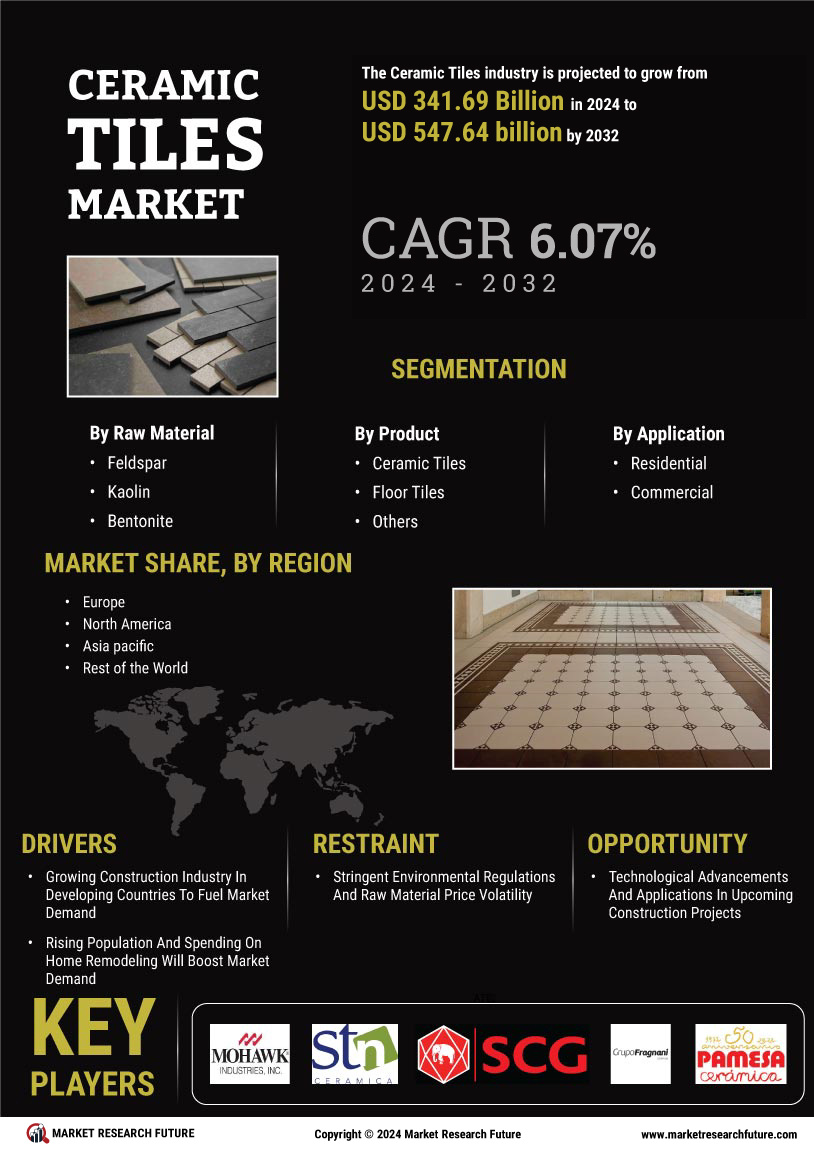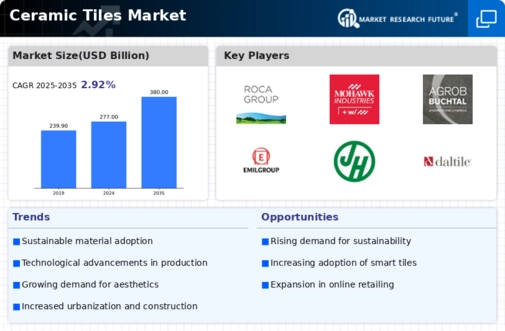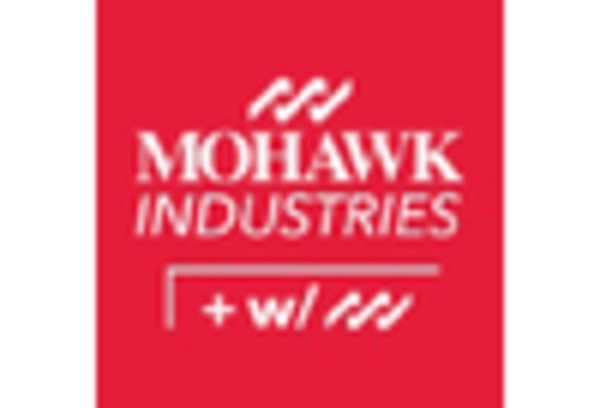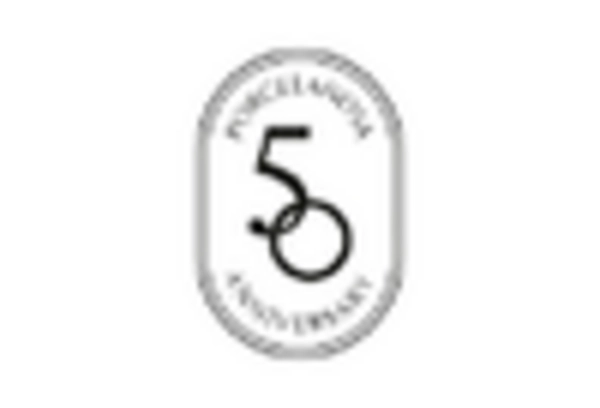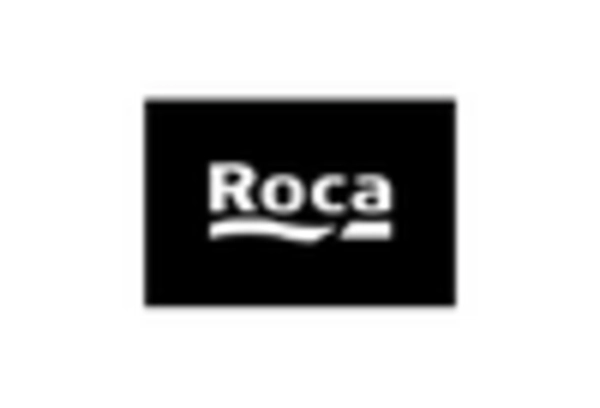Rising Construction Activities
The ongoing expansion in construction activities appears to be a primary driver for the Ceramic Tiles Market. As urbanization accelerates, the demand for residential and commercial buildings increases, leading to a heightened need for ceramic tiles. In 2025, the construction sector is projected to grow at a rate of approximately 5.5% annually, which could significantly boost the ceramic tiles demand. Furthermore, the trend towards modern architecture, which often incorporates ceramic tiles for aesthetic and functional purposes, suggests a sustained growth trajectory for the industry. This growth is further supported by government initiatives aimed at infrastructure development, which may enhance the market's potential.
Sustainability and Eco-Friendly Products
The increasing emphasis on sustainability is becoming a crucial driver for the Ceramic Tiles Market. Consumers and businesses alike are seeking eco-friendly products that minimize environmental impact. In 2025, it is projected that the market for sustainable ceramic tiles will grow by over 15%, reflecting a shift towards materials that are recyclable and produced with reduced carbon footprints. This trend is further supported by regulatory frameworks promoting sustainable building practices. As manufacturers respond to this demand by developing greener products, the ceramic tiles market is likely to expand, catering to environmentally conscious consumers.
Technological Innovations in Manufacturing
Technological advancements in the manufacturing processes of ceramic tiles are transforming the Ceramic Tiles Market. Innovations such as digital printing and advanced glazing techniques are enhancing the quality and design capabilities of ceramic tiles. In 2025, it is anticipated that the adoption of these technologies will increase production efficiency by approximately 20%, allowing manufacturers to meet the growing demand for customized products. Additionally, these innovations may lead to the development of eco-friendly tiles, aligning with the sustainability trends in the market. As manufacturers continue to invest in technology, the industry is likely to experience significant growth and diversification.
Increased Consumer Preference for Aesthetics
Consumer preferences are shifting towards aesthetically pleasing and durable flooring options, which is likely to benefit the Ceramic Tiles Market. The rise in disposable income and changing lifestyles have led consumers to invest in home improvement and interior design. In 2025, it is estimated that the market for decorative ceramic tiles will account for over 30% of total ceramic tile sales. This trend indicates a growing inclination towards unique designs, colors, and textures, which ceramic tiles can provide. As consumers become more design-conscious, the demand for high-quality ceramic tiles that offer both beauty and functionality is expected to rise, further propelling the market.
Growth in Renovation and Remodeling Activities
The surge in renovation and remodeling activities is significantly influencing the Ceramic Tiles Market. Homeowners are increasingly investing in upgrading their living spaces, which often includes the installation of ceramic tiles due to their durability and aesthetic appeal. In 2025, it is estimated that the renovation market will grow by approximately 4%, driving demand for ceramic tiles in both residential and commercial sectors. This trend is particularly evident in regions where older properties are being modernized, creating opportunities for ceramic tile manufacturers to offer innovative solutions. As the renovation market continues to thrive, the ceramic tiles industry is poised for substantial growth.
